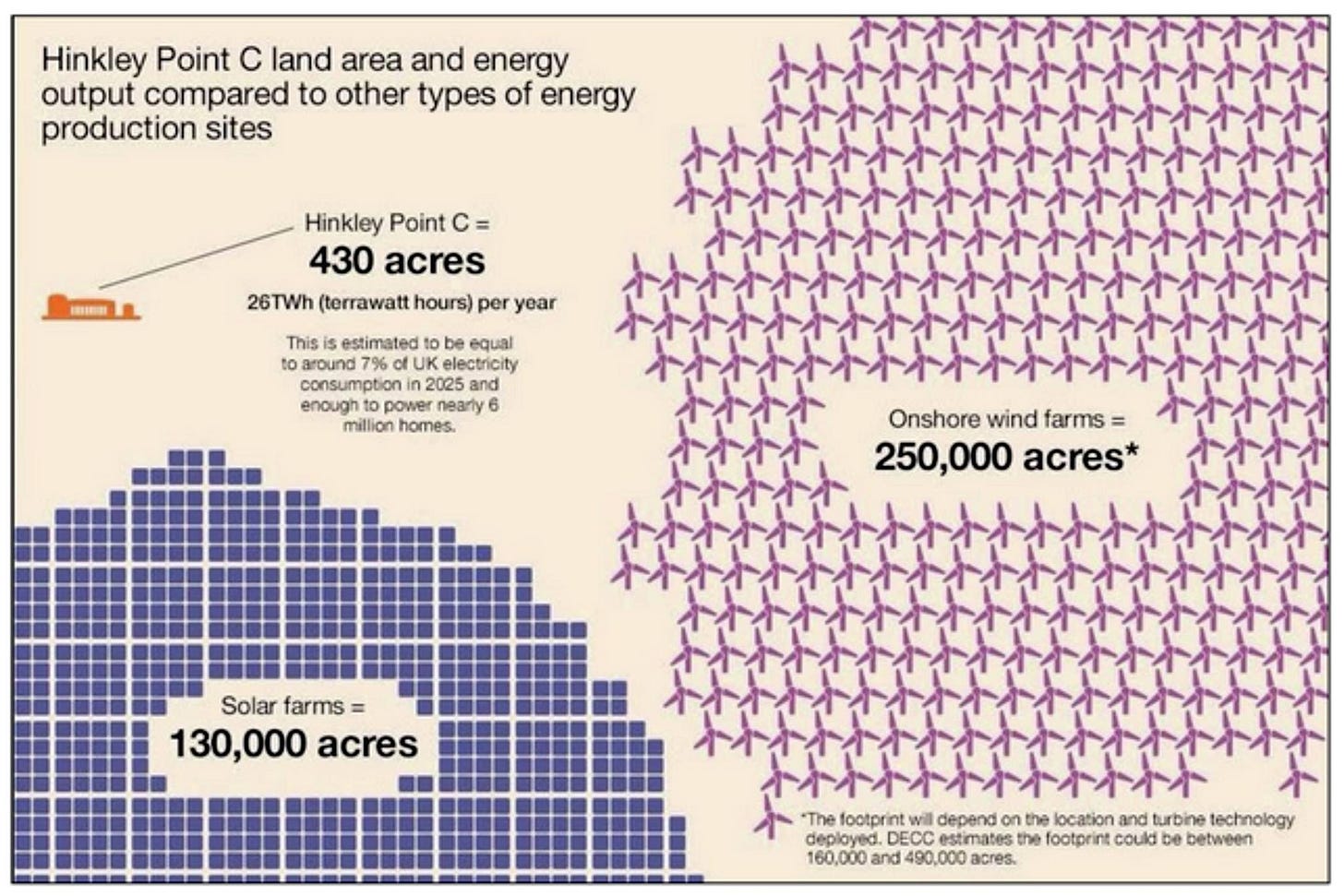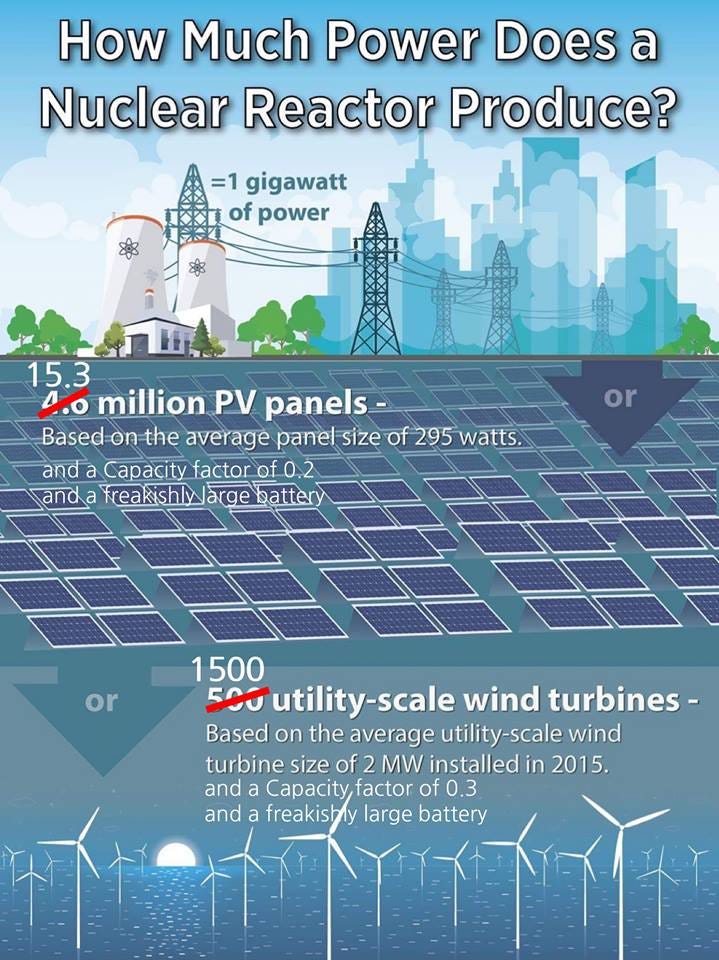
My social media feed (and a nontrivial number of spam emails) exhorts me on a regular basis to consider putting solar panels on the roof of my house. These entreaties almost always include the standard nod to Other People’s Money by reminding me that there are subsidies, tax breaks, and other forms of pelf available.
Considered in a vacuum, and apart from the aesthetic disruption of my home’s curb appeal, grabbing some “free” energy from that fiery ball of nuclear fusion that is, as I type this, 147,136,390 kilometers from me (or thereabouts) has its appeal. Indeed, utopian futurists imagine how great it would be if all our roofs were thus equipped. I’ll set aside their concomitant disdain for urban sprawl or single-family homes for now.
Problem is, we can’t consider such things in a vacuum. Or shouldn’t, at least.
Solar cells aren’t free. Nor are they as clean and green as many would have you believe. The rare earths used in them are acquired and refined with difficulty and much environmental unpleasantness, for one thing (for that reason, American has only one active RE mine in the entire country, and 90% of the current global supply comes from China, where they don’t care nearly as much about the cleanliness of extraction as we do). They can’t supply all our needs, either, because there is night, there are clouds, there is snow, and there is dirt.
Batteries, you say? There is the Tesla Powerwall, which stores 13.5kWh of juice, and costs $11,500. A decent sized house needs a couple, and will still need connection to the grid. That’d be in addition to the $18K average price for installation in my neck of the woods.
What does my $41K get me? 30 years of solar panel life, and 20 years of Powerwall life. Adding the cost of an extra Powerwall to get to a full 30 year cost figure and I’m at $52.5K.
How much does that save me? If I go with the average 32 panel installation, at 400w per panel and an average 4 hours of production per day, that’s 51 kWh per day I don’t have to buy from the utility (by the way, the government says the average home uses about 28). I’m currently paying 14 cents per kWh, so my solar panels and batteries will save me $2600 the first year.
So, across 30 years, I’m saving $78,000 for my $52,500 initial outlay, for a net of over $20K.
Not bad.
But…
Figure in degradation (1% per year) and the saving drops to $58,000. So, after three decades, I’ll be $5500 ahead of the game.
Except…
I’m paying up-front for this installation. If I factor in cost of money (and to be very generous I’ll assume only 3% per annum), and the future value of my outlay rises to $115,000 (assuming the third battery is bought in Year 20). Apply the same time-value-of-money calculation to the projected saving, and I get a future value of $111,000.
Oops.
Math can be inconvenient. Even allowing for variances to my assumptions and other factors I didn’t include, it seems safe to conclude that installing residential solar, absent subsidy, is more about the joys of “green” energy rather than about saving money*.
That the government promises free money with every solar purchase doesn’t make it better. Sure, I can soak other taxpayers for a few grand, but they’re going to do the same to me, and we all ultimately pay for the government’s profligacy.
Part of the problem lies in the inefficiency of distributed production of this sort. All the extra stuff that goes with installing panels and batteries in my home drives the total cost up substantially.
This is why rooftop solar is more of a virtue signal than an actual remedy, if one accepts that carbon energy is a problem. And it’s why solar panel farms are being prioritized.
Behold, the Telangana, India floating solar array I depict at the open of this piece. It’d take a dozen of them to produce as much power as one modest nuclear power plant, and that’s before we consider the aforementioned night, clouds, and dirt. Factoring those, it’d actually take at least three dozen to match one (small) nuke plant, and that’s assuming someone solves the storage problem (hint: we’re not even close), but checker-boarding thirty-six of those images as the art for this article seemed excessive.
Meme time, since a picture is worth a thousand words (or at least the 775 that I’ve typed so far), along with today’s punch line:
Nuclear power is the future.
The Biden Administration is finally waking up, just a bit, to what I’ve been saying for years… nay, decades (I’m not overly fond of saying “told ya so,” but I’ve had a lot of those moments lately). If we want to reduce our dependence on carbon energy, we need to split atoms, not soak up the sun or cuisinart condors. Yes, solar and wind can serve as supplemental or niche power sources in the right places and conditions, but their emergence should be entirely market-driven, with no subsidy or favoritism. The primary focus should be on streamlining the process for bringing new nuclear power plants on line, and the encouragement of a modular approach that would bring economies of scale into play.
Meanwhile, we should be drilling, baby, drilling, for natural gas, both for our own use and for export. Beyond its cleanliness (almost none of the particulates that coal plants emit that kill 15,000 American per year) and carbon-efficiency (4x the energy per unit of emitted carbon of coal), providing our allies and friendlies with natural gas takes geopolitical power away from hostiles such as Russia.
The future is nuclear.
Barring a world-changing invention (nuclear fusion is only 30 years away, and has been 30 year away for at least 40 years), this is the answer. We can bridge to that future with natural gas and make the country greener in the process. The subsidies and incentives being flung at wind and solar are mostly wasted money, not a small bit of which fund the bad guys (e.g. China for rare earths, Congo for cobalt). Even the Germans are realizing their mistake in shutting down their nuclear plants.
Will the West break from its WASABI delusion any time soon? I can only hope.
* I didn’t mention here that the government seems all too happy to drive the consumer’s cost of electricity upward, via myriad schemes, in order to make solar look better. Make everything else more expensive, yeah, that’s the ticket. Moreover, forcing us live with less is part of the grand plan. Government, here to help!
An afterword (I’m growing ever fonder of these). The standard rebuttals to nuclear power - if reflexive regurgitation of tropes can be considered ‘rebutals’ - only make me roll my eyes. Safety and waste management are what the nuclear-resistant default to every time I bring this up. For them:
Finally, I offer, in this article at least, no challenge to the climate alarmism dogma. Whether global warming is an existential and proximate threat, a problem we will need to adapt to across the decades, a benign outcome of human activity, a phenomenon apart from our emissions, or actually a good thing is of no relevance to the conclusion nuclear power is good for us. Or to the determination that large scale wind and solar is, pun intended, as big a folly as tilting at windmills - that they are more boondoggle than boon. You can be in any of the five camps I listed, or in a different one, and still find utility in advocating for nuclear power.
Thank you for reading! If you enjoy The Roots of Liberty, please subscribe (if you have already, thank you!), please hit that “like” button to let me know, please share any article you like wherever you roam the Internet, and please recommend the blog to your friends.
If you really like The Roots of Liberty and want to help keep it rolling, please consider becoming a paying subscriber here at Substack, or at a lighter level as contributor to the blog via Patreon.
Thank you, again, for your support!
Peter.









A single Powerwall used to be $11,500 and each thereafter $7,500. The reason being a $4000 Tesla Energy Gateway was required to manage incoming and outgoing energy for the first unit. Current price first Powerwall is $12,850, additional Powerwalls are $8350. And while you degrade the PV system 1% per year you didn't account for future energy prices. $2600 degraded 1% per year for 30 years is $67,677.90 not $58,000 (which is 30 years at 70%). While PV is not the clear cut economic choice of a 30 MPG vehicle vs 20 MPG, the numbers are close enough one can not ignore. But not so good as for mandates from Beloved Leader.
Another excellent piece! Very convincing!